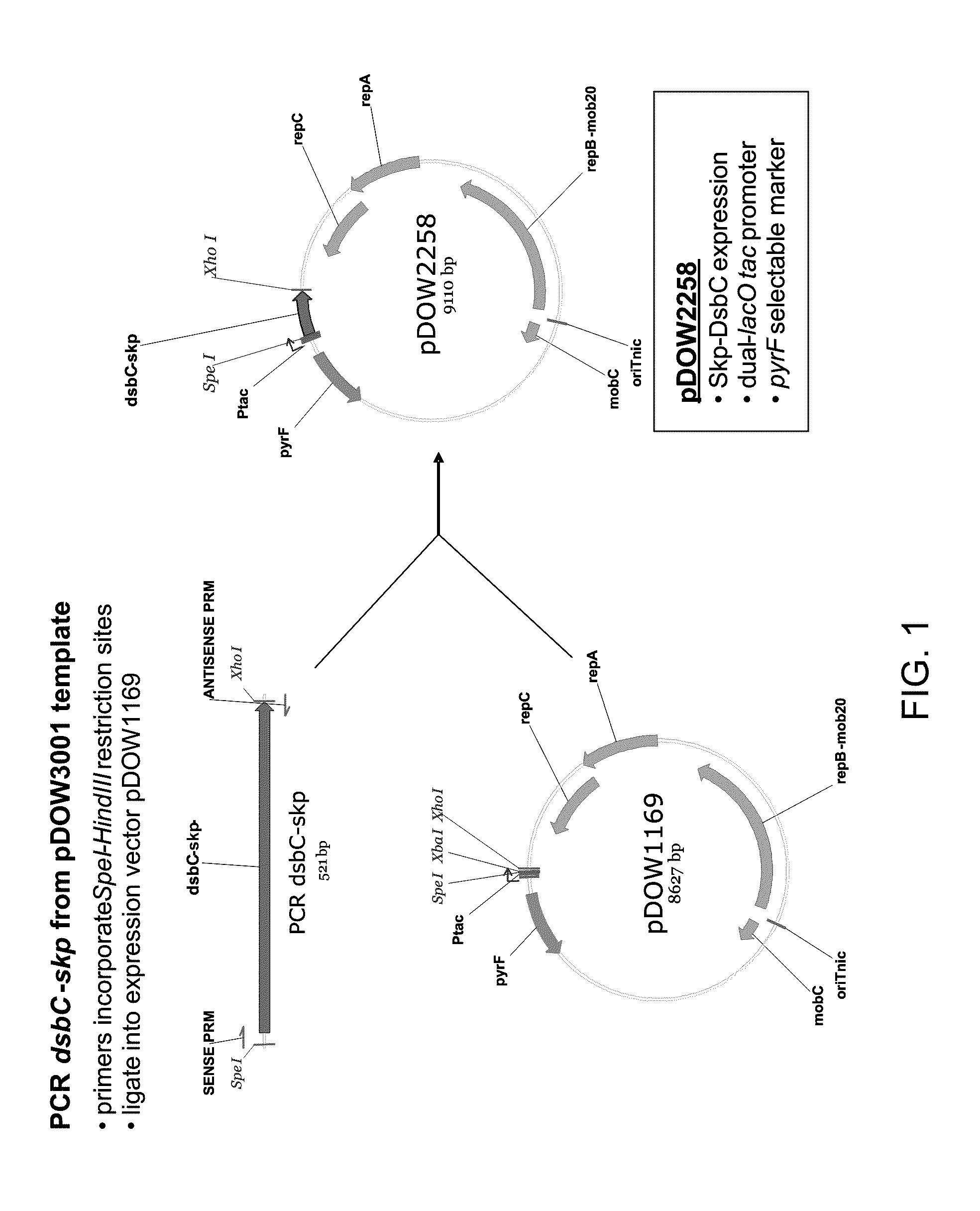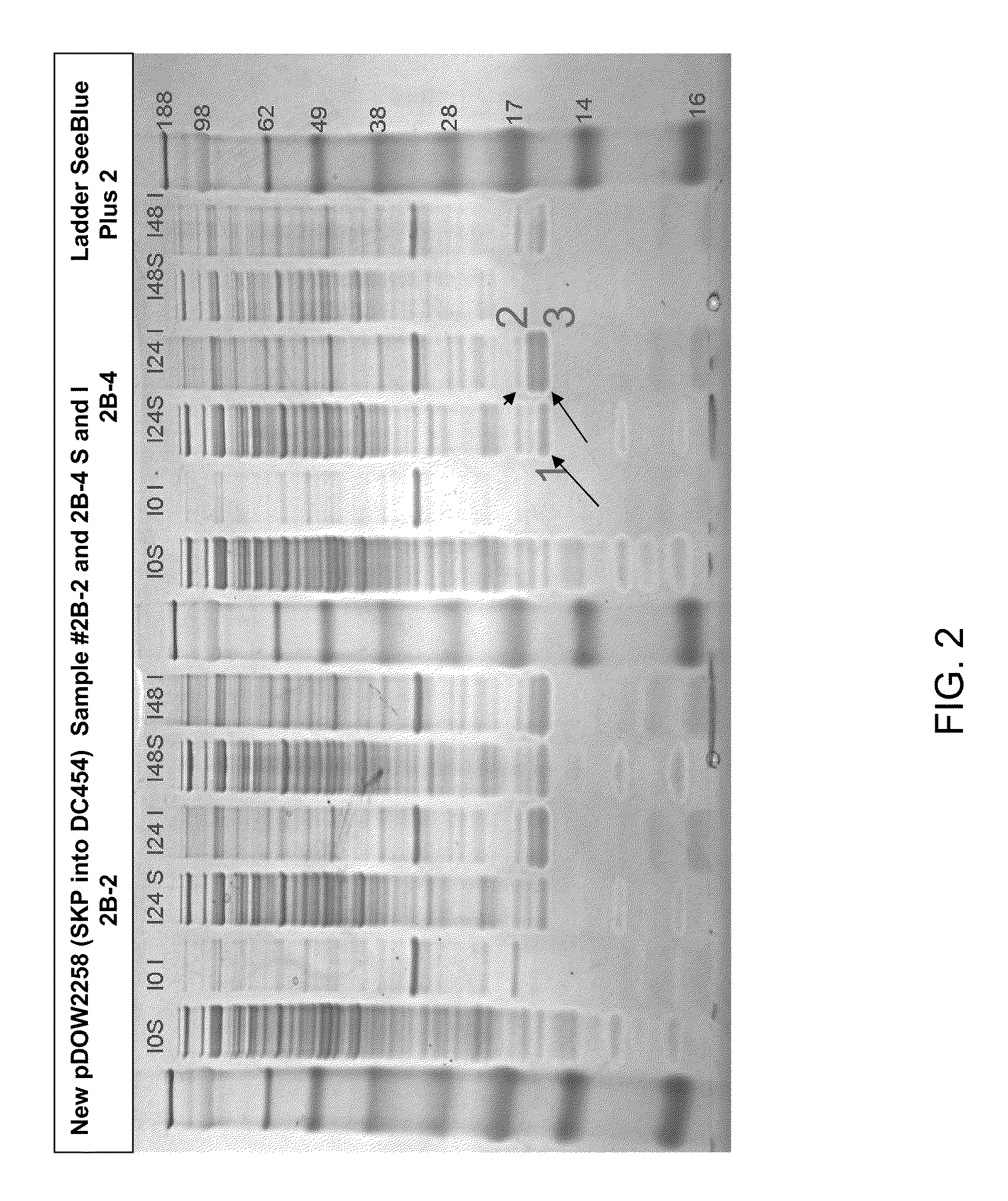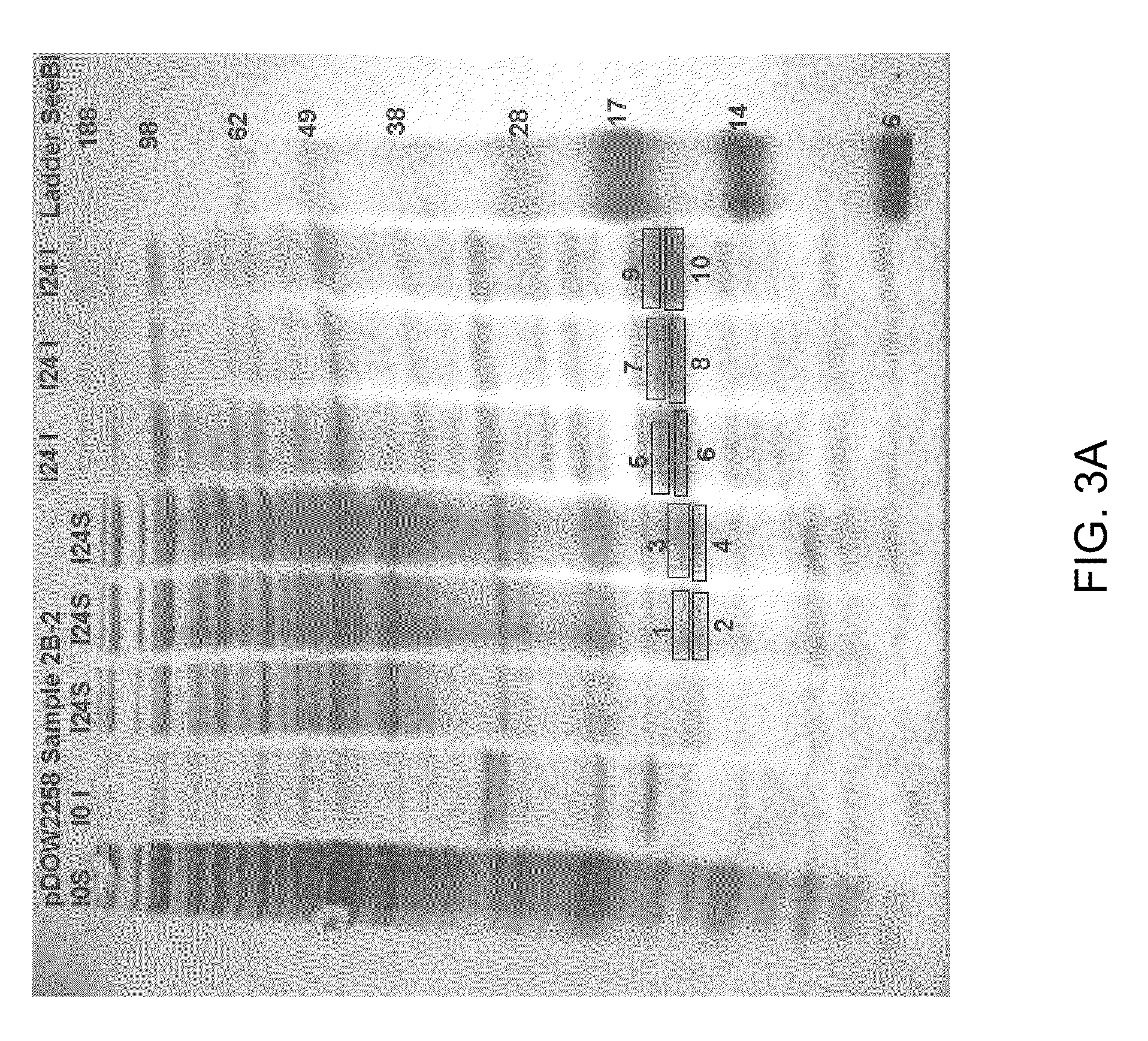Bacterial leader sequences for increased expression
a technology of leader sequences and polypeptides, applied in the field of protein production, can solve the problems of inefficient secondary modification, inability to efficiently achieve secondary modifications, and inability to fold, and achieve the effect of targeting an expressed protein
- Summary
- Abstract
- Description
- Claims
- Application Information
AI Technical Summary
Benefits of technology
Problems solved by technology
Method used
Image
Examples
experimental examples
Example 1
Identification of dsbC Leader Sequence
I. Materials and Methods
[0191]A. Construction of pDOW2258 Expression Plasmid
[0192]Standard recombinant DNA techniques were used in the construction of plasmid pDOW2258 used for the expression of the DsbC leader peptide-Skp fusion protein (FIG. 1).
[0193]A PCR amplification reaction was performed using Herculase Master Mix (Stratagene, #600610-51), primers RC-322 (5′-AATTACTAGTAGGAGGTACATTATGCGCTT-3′, SEQ ID NO:25) and RC-323 (5′-TATACTCGAGTTATTTAACCTGTTTCAGTA-3′, SEQ ID NO:26), and template plasmid pDOW3001 (already containing the cloned dsbC leader-skp coding sequence fusion generated by SOE PCR) to amplify the 521 bp dsbC-skp coding sequence using the manufacturer's protocol. The PCR fragment was purified using the QIAQUICK® Gel Extraction Kit (Qiagen, #28704), digested with SpeI and XhoI restriction nucleases (New England Biolabs, R0133 and R0146), then ligated to the expression plasmid pDOW1169 (already digested with SpeI and XhoI) u...
example 2
Identification of pbp* Secretion Signal
I. Materials and Methods
[0201]A. Strains
[0202]DC206 (ΔpyrF, lsc::lacIQ1) was constructed by PCR amplification of the E. coli lacI gene from pCN5 lacI (Schneider et al. 2005b) using primers incorporating the lacIQ1 promoter mutation (Calos et al. 1980), and recombining the gene into the lsc (levan sucrase) locus of MB101 ΔpyrF (Schneider, Jenings et al. 2005b) by allele exchange.
[0203]B. Construction of Transposome to Screen for P. Fluorescens Signal Sequences
[0204]A transposome vector was engineered by inserting the kanR gene (encoding resistance to kanamycin) and a phoA reporter gene, which was missing the start codon and N-terminal signal sequence, between the vector-encoded transposase binding sites (“mosaic ends”) in the transposome vector pMOD-2 (Epicentre Technologies). The 1.6 kB kanR gene was purified from pUC4-KIXX (Pharmacia) by restriction digestion with XhoI, then ligated into SalI-digested pMOD2 to form pDOW1245. The signal-sequenc...
example 3
Identification of Bce Leader Sequence
I. Materials and Methods
[0245]BceL is a secretion leader that was identified to be encoded by part of DNA insert containing a gene for a hydrolase from Bacillus coagulans CMC 104017. This strain Bacillus coagulans is also known as NCIMB 8041, ATCC 10545 and DSMZ 2311 in various commercial culture collections, and has it's origins as NRS784. NRS 784 is from the NR Smith collection of Spore forming bacteria (Smith et al Aerobic spore forming bacteria US. Dep. Agr. Monogra. 16:1-148 (1952)). The other original reference for this strain cited by NCIMB is Cambell, L. L. and Sniff E. E. (1959. J. Bacteriol. 78:267 An investigation of Folic acid requirements of Bacillus coagulans).
[0246]Sequence and Bioinformatics Analysis
[0247]A DNA insert of 4,127 bp from Bacillus coagulans CMC 104017 was sequenced and analyzed to localize coding sequences potentially encoding a hydrolase enzyme. One coding sequence of 1,314 bp, designated CDS1, was identified behind ...
PUM
| Property | Measurement | Unit |
|---|---|---|
| density | aaaaa | aaaaa |
| time | aaaaa | aaaaa |
| temperature | aaaaa | aaaaa |
Abstract
Description
Claims
Application Information
 Login to View More
Login to View More - R&D
- Intellectual Property
- Life Sciences
- Materials
- Tech Scout
- Unparalleled Data Quality
- Higher Quality Content
- 60% Fewer Hallucinations
Browse by: Latest US Patents, China's latest patents, Technical Efficacy Thesaurus, Application Domain, Technology Topic, Popular Technical Reports.
© 2025 PatSnap. All rights reserved.Legal|Privacy policy|Modern Slavery Act Transparency Statement|Sitemap|About US| Contact US: help@patsnap.com



